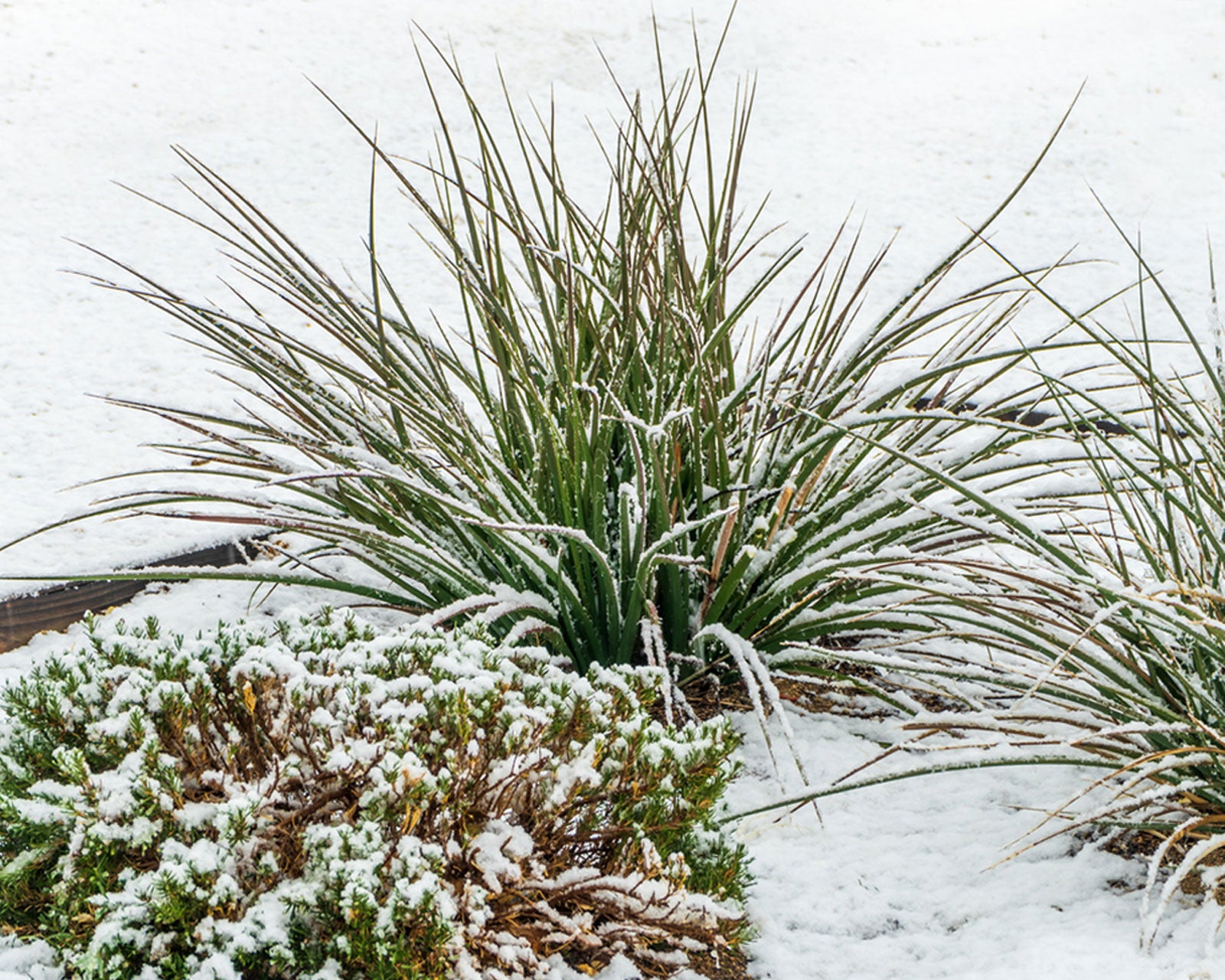Winter Garden Design: How To Grow A Winter Garden


While the idea of enjoying a pleasant winter garden seems highly unlikely, a garden in winter is not only possible but can be beautiful too. The most important design features to consider when growing a winter garden include shapes, textures, colors and contrasts. Keep reading to learn more about what can be grown in your garden over winter.
How to Grow a Winter Garden
Growing a winter garden is easy. There are a number of winter garden plants and accents that can be included in your winter garden design.
Foliage Color and Bark Interest
The most dramatic change in the garden comes when trees begin losing their leaves. Once flowering bulbs and other plants have faded, the garden takes on another dimension with stunning foliage displays in shades of yellow, orange, red and purple. The various shades produced by evergreens also enhance the scene. While trees and shrubs are common elements in fall gardens due to their brilliant foliage or late blooms, they can also offer additional interest during winter. In fact, the yellow blossoms of witch hazel are not only intriguing during fall but extremely fragrant, and its aroma is even stronger during winter. Trees and shrubs provide more than just color or fragrance; they can also create various forms and texture to the winter garden design. When choosing trees and shrubs, you should pay attention to the interesting characteristics offered from their exfoliating bark. Bark that peels or is patterned with intriguing twig color can be quite captivating during even the most gloomy winter days. River birch and paperbark maples provide interest with their peeling bark, while the colored bark of red-twig dogwoods and mahogany-colored crabapples fill the winter garden with an additional splash of color. Various perennials bloom during autumn and provide additional interest throughout winter. These are some of the best evergreen plants to include in your winter garden design for contrast and color:
Berries and Seed Heads
Although the majority of flowers may be scarce during winter, their berries are often abundant. Hollies are rich with berries and provide additional interest from their spiky leaves. Many viburnums keep their berries throughout early winter. Berries supply color and interest with shades of red, purple, and yellow. There are also many ground covers available that produce berries and have colorful leaves. Another aspect of shrubs and flowers for a garden in winter comes from interesting seed heads. For instance, hydrangeas often hold the remnants of flower heads as do the browned snippets of sedums, rudbeckias and coneflowers. The same is true for many flowering ornamental grasses, which provide additional structure. Although ornamental grasses generally reach their peak during fall, they can also add texture, volume and color when growing a winter garden.
Additional Winter Accents
While winter garden plants can offer unique beauty for a garden in winter, adding garden accessories such as benches, fountains, urns and statues will enliven and draw attention to it as well. Weather-resistant accents make strong statements in winter; however, these garden features should be used sparingly to avoid a cluttered appearance. Additionally, the placement of outside lights in the landscape can offer further enjoyment while highlighting these focal points. So now that you know what can be grown in your garden over winter, you can get started with growing a winter garden that fits your needs. A garden in winter filled with interesting elements not only adds natural charm but will offer uplifting beauty to nearly any winter garden design.
Gardening tips, videos, info and more delivered right to your inbox!
Sign up for the Gardening Know How newsletter today and receive a free copy of our e-book "How to Grow Delicious Tomatoes".

Nikki Tilley has been gardening for nearly three decades. The former Senior Editor and Archivist of Gardening Know How, Nikki has also authored six gardening books.
-
 Looking For Plants To Give You The Soft And Fuzzies? Try These 5 Fuzzy Leaf Plant Options
Looking For Plants To Give You The Soft And Fuzzies? Try These 5 Fuzzy Leaf Plant OptionsLovers of texture, drama, silver foliage and tactile plants will adore these special sensory garden additions. These fuzzy leaf plant options will leave you all aglow
By Susan Albert
-
 Get Ready For A Summer Of Hummers! Grow These Full Sun Hummingbird Plants and Flowers
Get Ready For A Summer Of Hummers! Grow These Full Sun Hummingbird Plants and FlowersIf you’re lucky enough to enjoy a sunny backyard, make sure you are maxing out on your pollinator opportunities and grow these full sun hummingbird plants and flowers
By Tonya Barnett